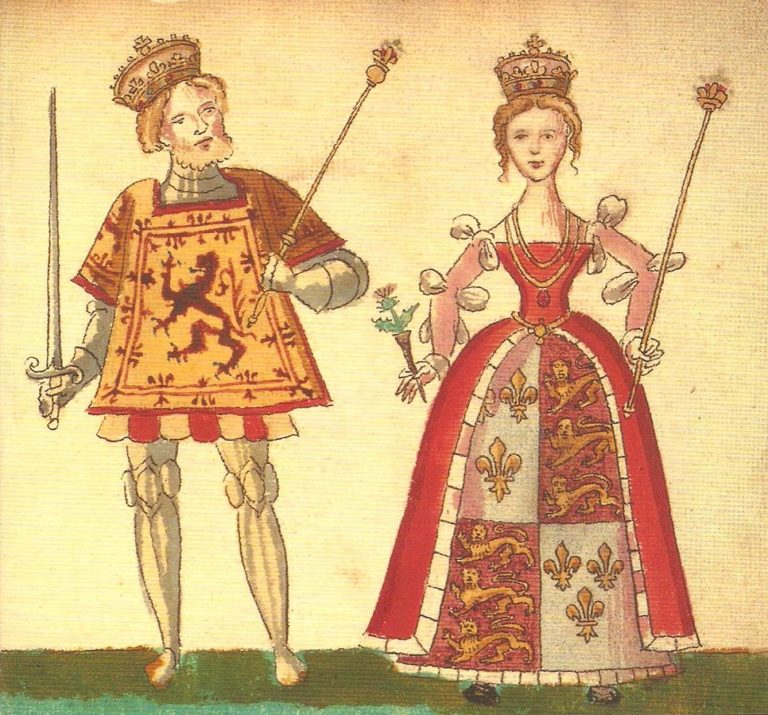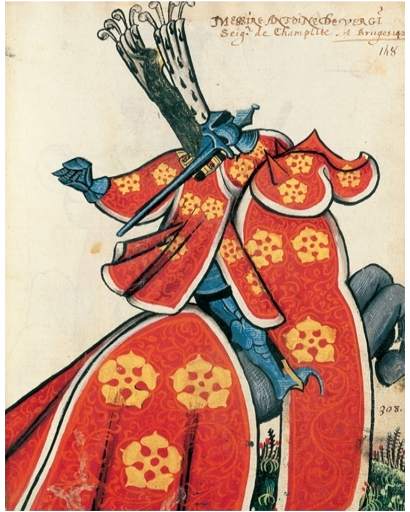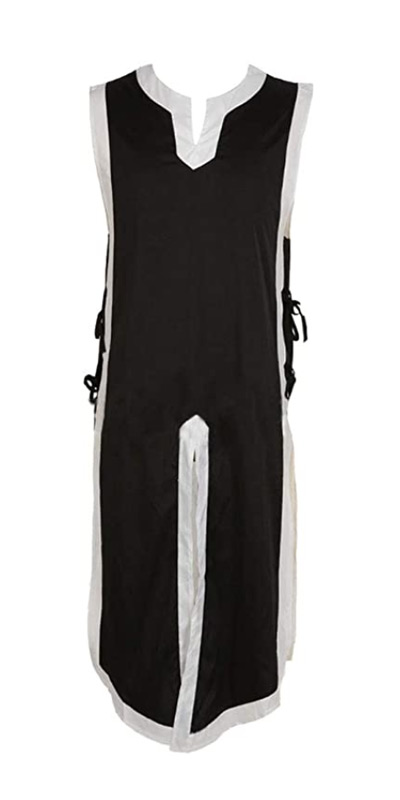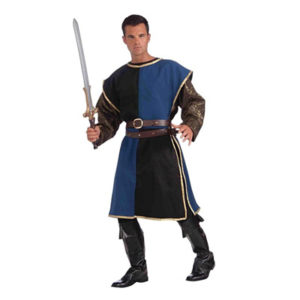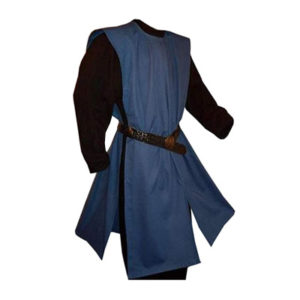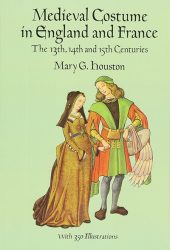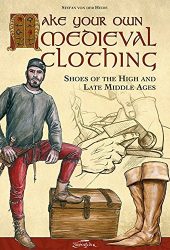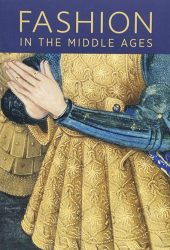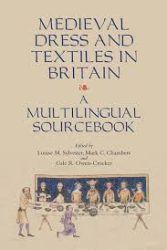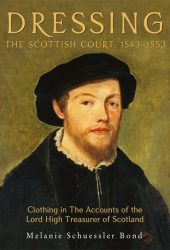Tabards were a type of short coat commonly worn by European men during the late Middle Ages. The garment could be sleeveless or have short sleeves or shoulder pieces.
The Oxford English Dictionary first records the word in English in 1450, while tabards are frequently represented on tomb effigies and monumental brasses of the late 15th and early 16th centuries.
Although tabards were usually work clothes (worn by peasants, monks, and foot-soldiers), some belonging to knights and worn over their armor was emblazoned on the front and back with a coat of arms.
Tabards were distinguished from surcoats by being open-sided and shorter. They could be worn with or without a belt.
History of the Tabard
Originally, tabards (from the French tabarde) were humble outer garments made generally without sleeves. Later, a tabard normally comprised four textile panels (two large panels hanging down the wearer’s front and back, and two smaller panels hanging over his arms as shoulder-pieces or open “sleeves”). These panels were usually emblazoned with the same coat of arms.
With the development of plate armor and the decline in shields, tabards became an important means of battlefield identification.
By the end of the 16th century, tabards were almost exclusively associated with officers of arms.
Types of Medieval Tabards
Tabards were distinguished by their design and served both practical and decorative purposes. Here are a few examples of different types of medieval tabards:
Heraldic Tabard: The heraldic tabard was the most common type and prominently displayed the wearer’s coat of arms or heraldic symbols. It was usually made of a single piece of fabric, often silk or velvet, and was designed to be worn over armour or other garments. The front and back of the tabard featured the coat of arms, allowing the wearer to showcase their identity and allegiance. Heraldic tabards were primarily worn by knights, nobles, and heralds.
- Livery Tabard: Livery tabards were associated with the livery system, where a noble or wealthy household would provide distinctive clothing to their servants or retainers. Livery tabards displayed the colours and symbols associated with a particularly noble or household. They were often made of wool and had simpler designs compared to heraldic tabards, focusing on the colours and badges associated with the noble or household. Livery tabards were worn by servants, attendants, and other members of the household.
Ecclesiastical Tabard: Ecclesiastical tabards were worn by members of the clergy, such as bishops or high-ranking church officials. They were typically made of fine fabric, adorned with ecclesiastical symbols or designs, and often featured a cape-like extension at the back. Ecclesiastical tabards were ceremonial garments worn during religious processions or special occasions.
Military Tabard: Military tabards were worn by soldiers or members of military orders. They were often made of sturdy fabric, such as linen or wool, and featured simple designs or symbols associated with the military order or unit. Military tabards were primarily functional garments, providing some protection and identification on the battlefield.
Image Gallery: Tabards in Medieval Manuscripts & Art
